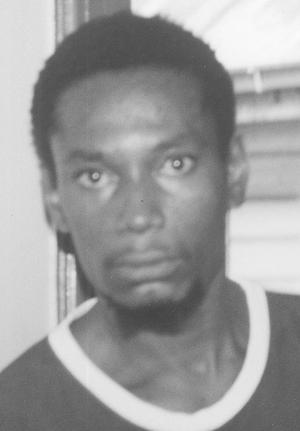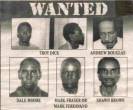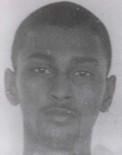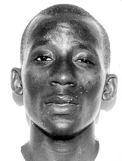Five men plummet a country into chaos and turmoil- the criminals Guyanese won’t soon forget
osted by TrakkerNews on February 23, 2011 in Features | Comments Off
Zaheer Abbass recalls a horrible crime spree that paralyzed Guyana back in 2002.
February 23rd1970-the day Guyana became a Republic, severing all formal ties with the British Crown. The struggle dates back to the 1763 slavery revolt by Cuffy, whose effort was to overthrow Dutch rule over Berbice and remove the shackles of slavery. It was a landmark event in the entire western hemisphere.
Since that day in 1970 when the golden arrow head was hoisted to signal Guyana’s Republic, citizens adopted their own way of revelry to celebrate the occasion.
Mashramani, as it is now known, was simply an event organized years ago by a group of Lindeners to observe the day. In the years to come, Government adopted the name and events to officially celebrate Republic Day.
Mash is known for heavy revelry, float parades, costumes, steel pan music and the march of thousands in the city.
But while this history has been told so many times and in so many ways, there is one year that would change the fate of Guyanese and the future of the country. February 23rd2002.
As the celebration heated up during the evening hours, many were either glued to the television or having fun on the mash route, when terror was unleashed at the Camp street prison. Five dangerous and high profile criminals shot and stabbed their way out of jail.
Andrew Douglas, Dale Moore, Shawn Browne, Mark Fraser and Troy Dick, whose faces graced police wanted posters for the next few months, had been in possession of an AK47. Four of them had been on remand on charges of murder and/or armed robbery, while the fifth, Fraser, had been serving a sentence of twenty-five years for robbery.
The prisoners shot the guard, Roxanne Winfield, on the inner gate, after she had refused to hand over her keys, throwing them into a corner instead, and then stabbed to death twenty-one year-old prison officer, Troy Williams, who was on the outer gate and had rushed to her aid.
A police press release on the day of the escape had identified Shawn Browne as the man who did the shooting. Based on eyewitness reports, the escapees hijacked a car in the vicinity of George Street. While the five were in the process of hijacking a car, witnesses said two neatly-dressed men who appeared to be prison officers, stopped a police car some distance away. The two men had earlier been seen attempting to halt cars in D’Urban Street, apparently with a view to chasing the escapees.
The police retreated, said witnesses, after the felons shouted “Shoot!” and the hijacked car then turned into Princess Street. The gang then stopped at the Ruimveldt well, where they hijacked a second car, holding a woman, her mother and her baby at gun and knife-point. They then headed towards the East Coast of Demerara and disappeared.
The months to follow would see terror unleashed in the country leaving a trail of death and destruction at the hands of the ‘five escapees’ as they have been nicknamed.
The gang emerged from setting up camp in the Buxton backlands. They held the community under siege and recruited youngsters who would be trained and made to follow in their footsteps in later days to come.
I remember being a reporter with the famous News Today outfit, traveling to Buxton two weeks after the infamous jailbreak.
It was a community covered in fear and isolated, devoid of police presence. The authorities were fired upon whenever they attempted to raid the village in search of the wanted criminals.
I witnessed first- hand, the operations in the village. It was like boys playing war break, with every corner a youngster armed with guns staking out.
Along with my cameraman we ventured into the village to get a sense of how people were coping with criminals in their midst.
To my astonishment, I came face to face with three of the wanted men. They called out to me by name, since they were quite tuned in to every newscast since the jailbreak. One of the men said that we should not point the camera at them. We proceeded to take a couple of shots in the village and left in a haste. At the borders to the east and west the army set up road blocks. We visited the village almost daily after then as reports of bodies and shootings surfaced. There were many unexplained deaths in the village and surrounding communities.
I received a video tape by an anonymous person two weeks after the jailbreak. The tape was addressed to me and was dropped off at my workplace on Quamina Street. Reviewing the tape, I came across perhaps the one of many big breaks in a journalist career. It was the leader of the gang Andrew Douglas with a gun to his side making a statement to the authorities. I did not hesitate to air the tape on the 7 o’clock news, causing widespread concerns, with the security forces rushing down at my work place for information. They were of the impression that I recorded the footage.
Douglas was videotaped in army fatigues with a rifle while making a statement that was controversially broadcast on two television channels, proclaiming his innocence and making several allegations against individuals in public life.
I was taken in for questioning with a battery of lawyers coming to my rescue. The gang became big with about four other notorious wanted men joining them. The Target Special Squad came into action and had several shoot outs with the criminals. In April 2002, a home was invaded in Buxton by the squad, during which Shaka Blair was shot and killed.
The aftermath of the killing of Buxtonian introduced another element into the crime saga. The police claimed they had gone to Blair’s house in Buxton at around 1:00am to question him after his fingerprints had been found on vehicles used by the bandits, and that they had shot him after he had discharged a loaded firearm at them. This account was disputed by his wife, who had been present in the house at the time, as well as other relatives, who said that Blair did not have a gun, and had been killed in cold blood. Subsequent forensic tests on his hands showed no evidence of him having fired a weapon. The funeral of Blair on April 15 degenerated into chaos, with persons in the procession throwing missiles at the police, who first fired in the air, and then at the hostile assembly.
In a statement, the police said that they had been fired on from the crowd.
It was at the funeral of Shaka Blair that the first of a series of handbills was circulated claiming a political role for the five escapees. Entitled ‘Shaka Lives,’ it was signed ‘The Five Freedom Fighters,’ who, it was claimed, would not leave the country but would stand and fight for the “African-Guyanese nation”. Between March to Decemeber, matters got worse with the crime spree taking on new dimensions. The killing of 12 police personnel, took top priority for investigators. The gang was mercilessly killing the officers in retaliation for what they claim to be the wrongful gunning down of black youths in the country pointing to extra-judicial killings.
Businessmen were being robbed and kidnapped and other criminal gangs were being killed by the infamous five. By this time Buxtonians were at the mercy of the criminals, who failed to abide with their rules were driven out, others attacked, killed and their houses burnt.
With the heavy international attention, the gang’s reign of terror started to crumble after the joint services swooped down at a house in Prashad Nagar. It was a safe house used by the gang to stash arms and ammunition and detain kidnapped victims. A heavy gun battle ensued between three criminals and the joint services.
I remember being at Lyken Funeral Parlour on June 5 2002, doing a live report via telephone, when the first of two bodies were brought in. The shootout left the first of the gang of five dead, it was Shawn Brown and two others identified as Delon George and Tony Singh.
May-September 2005: Sugar workers Maikhram Sawh, Sukhram Dhanay and Hardat vanish mysteriously while working in the canefields on East Coast Demerara. Despite several searches, they have never been found.
Perhaps the most noteworthy case occurred when American diplomat, Steve Lesniak, was kidnapped while playing golf at the Lusignan Golf Club.He was released hours later when a ransom was delivered to his kidnappers in Buxton. But earlier, the US Government issued a federal arrest warrant for notorious bandit Shawn Brown who was eventually shot dead by security forces during a standoff in Prashad Nagar.
The biggest mistake the gang made was the kidnapping of alleged drug heavy weight and owner of Keishar’s stores Bramanand Nandalall in October. He is said to be well connected to the Colombian drug cartel. Within a day of his kidnapping, a group of heavily armed men, not connected to any agency in Guyana was able to free Nandalall following a serious gun battle, which left the captors and a number of wanted men dead. The death trail started from the city and ended at Annadale on with the death of Mark Fraser, Dale Moore and five others.
August 26, Andrew Peter Douglas bullet-riddled body was found in a motor-car at Farm, East Bank Demerara. A senior police officer described him as a "notorious criminal who has murdered and robbed a number of people."
Douglas, formerly of 32, Middle Walk, Friendship, East Coast Demerara, who is also known as `Fine Man' and `Todd Dexter', was once a member of the Special Constabulary, which is an auxillary of the Guyana Police Force with powers to arrest and conduct investigations into criminal activities.
Douglas gained notoriety in late 1999 when he was linked to the now deceased, infamous Lindon `Blackie' London in a series of armed robberies, particularly the America Street robbery in which several persons were shot, including a police officer.
I could go on and on about a crime wave the crippled Guyana in the year 2002 and beyond. The dates, names and sufferings of many are still fresh after all these years. Being a journalist covering these stories daily makes you a walking book of chronicle events. I would spend my Mashramani in the usual festive way with a couple of drinks watching the float, but like many other journalists that reported on the events on this day that year in 2002, there will always be a grim reminder of the terror that was unleashed.

Shawn Brown

Troy Dick


Inspector Gadget

Romel Reman
osted by TrakkerNews on February 23, 2011 in Features | Comments Off
Zaheer Abbass recalls a horrible crime spree that paralyzed Guyana back in 2002.
February 23rd1970-the day Guyana became a Republic, severing all formal ties with the British Crown. The struggle dates back to the 1763 slavery revolt by Cuffy, whose effort was to overthrow Dutch rule over Berbice and remove the shackles of slavery. It was a landmark event in the entire western hemisphere.
Since that day in 1970 when the golden arrow head was hoisted to signal Guyana’s Republic, citizens adopted their own way of revelry to celebrate the occasion.
Mashramani, as it is now known, was simply an event organized years ago by a group of Lindeners to observe the day. In the years to come, Government adopted the name and events to officially celebrate Republic Day.
Mash is known for heavy revelry, float parades, costumes, steel pan music and the march of thousands in the city.
But while this history has been told so many times and in so many ways, there is one year that would change the fate of Guyanese and the future of the country. February 23rd2002.
As the celebration heated up during the evening hours, many were either glued to the television or having fun on the mash route, when terror was unleashed at the Camp street prison. Five dangerous and high profile criminals shot and stabbed their way out of jail.
Andrew Douglas, Dale Moore, Shawn Browne, Mark Fraser and Troy Dick, whose faces graced police wanted posters for the next few months, had been in possession of an AK47. Four of them had been on remand on charges of murder and/or armed robbery, while the fifth, Fraser, had been serving a sentence of twenty-five years for robbery.
The prisoners shot the guard, Roxanne Winfield, on the inner gate, after she had refused to hand over her keys, throwing them into a corner instead, and then stabbed to death twenty-one year-old prison officer, Troy Williams, who was on the outer gate and had rushed to her aid.
A police press release on the day of the escape had identified Shawn Browne as the man who did the shooting. Based on eyewitness reports, the escapees hijacked a car in the vicinity of George Street. While the five were in the process of hijacking a car, witnesses said two neatly-dressed men who appeared to be prison officers, stopped a police car some distance away. The two men had earlier been seen attempting to halt cars in D’Urban Street, apparently with a view to chasing the escapees.
The police retreated, said witnesses, after the felons shouted “Shoot!” and the hijacked car then turned into Princess Street. The gang then stopped at the Ruimveldt well, where they hijacked a second car, holding a woman, her mother and her baby at gun and knife-point. They then headed towards the East Coast of Demerara and disappeared.
The months to follow would see terror unleashed in the country leaving a trail of death and destruction at the hands of the ‘five escapees’ as they have been nicknamed.
The gang emerged from setting up camp in the Buxton backlands. They held the community under siege and recruited youngsters who would be trained and made to follow in their footsteps in later days to come.
I remember being a reporter with the famous News Today outfit, traveling to Buxton two weeks after the infamous jailbreak.
It was a community covered in fear and isolated, devoid of police presence. The authorities were fired upon whenever they attempted to raid the village in search of the wanted criminals.
I witnessed first- hand, the operations in the village. It was like boys playing war break, with every corner a youngster armed with guns staking out.
Along with my cameraman we ventured into the village to get a sense of how people were coping with criminals in their midst.
To my astonishment, I came face to face with three of the wanted men. They called out to me by name, since they were quite tuned in to every newscast since the jailbreak. One of the men said that we should not point the camera at them. We proceeded to take a couple of shots in the village and left in a haste. At the borders to the east and west the army set up road blocks. We visited the village almost daily after then as reports of bodies and shootings surfaced. There were many unexplained deaths in the village and surrounding communities.
I received a video tape by an anonymous person two weeks after the jailbreak. The tape was addressed to me and was dropped off at my workplace on Quamina Street. Reviewing the tape, I came across perhaps the one of many big breaks in a journalist career. It was the leader of the gang Andrew Douglas with a gun to his side making a statement to the authorities. I did not hesitate to air the tape on the 7 o’clock news, causing widespread concerns, with the security forces rushing down at my work place for information. They were of the impression that I recorded the footage.
Douglas was videotaped in army fatigues with a rifle while making a statement that was controversially broadcast on two television channels, proclaiming his innocence and making several allegations against individuals in public life.
I was taken in for questioning with a battery of lawyers coming to my rescue. The gang became big with about four other notorious wanted men joining them. The Target Special Squad came into action and had several shoot outs with the criminals. In April 2002, a home was invaded in Buxton by the squad, during which Shaka Blair was shot and killed.
The aftermath of the killing of Buxtonian introduced another element into the crime saga. The police claimed they had gone to Blair’s house in Buxton at around 1:00am to question him after his fingerprints had been found on vehicles used by the bandits, and that they had shot him after he had discharged a loaded firearm at them. This account was disputed by his wife, who had been present in the house at the time, as well as other relatives, who said that Blair did not have a gun, and had been killed in cold blood. Subsequent forensic tests on his hands showed no evidence of him having fired a weapon. The funeral of Blair on April 15 degenerated into chaos, with persons in the procession throwing missiles at the police, who first fired in the air, and then at the hostile assembly.
In a statement, the police said that they had been fired on from the crowd.
It was at the funeral of Shaka Blair that the first of a series of handbills was circulated claiming a political role for the five escapees. Entitled ‘Shaka Lives,’ it was signed ‘The Five Freedom Fighters,’ who, it was claimed, would not leave the country but would stand and fight for the “African-Guyanese nation”. Between March to Decemeber, matters got worse with the crime spree taking on new dimensions. The killing of 12 police personnel, took top priority for investigators. The gang was mercilessly killing the officers in retaliation for what they claim to be the wrongful gunning down of black youths in the country pointing to extra-judicial killings.
Businessmen were being robbed and kidnapped and other criminal gangs were being killed by the infamous five. By this time Buxtonians were at the mercy of the criminals, who failed to abide with their rules were driven out, others attacked, killed and their houses burnt.
With the heavy international attention, the gang’s reign of terror started to crumble after the joint services swooped down at a house in Prashad Nagar. It was a safe house used by the gang to stash arms and ammunition and detain kidnapped victims. A heavy gun battle ensued between three criminals and the joint services.
I remember being at Lyken Funeral Parlour on June 5 2002, doing a live report via telephone, when the first of two bodies were brought in. The shootout left the first of the gang of five dead, it was Shawn Brown and two others identified as Delon George and Tony Singh.
May-September 2005: Sugar workers Maikhram Sawh, Sukhram Dhanay and Hardat vanish mysteriously while working in the canefields on East Coast Demerara. Despite several searches, they have never been found.
Perhaps the most noteworthy case occurred when American diplomat, Steve Lesniak, was kidnapped while playing golf at the Lusignan Golf Club.He was released hours later when a ransom was delivered to his kidnappers in Buxton. But earlier, the US Government issued a federal arrest warrant for notorious bandit Shawn Brown who was eventually shot dead by security forces during a standoff in Prashad Nagar.
The biggest mistake the gang made was the kidnapping of alleged drug heavy weight and owner of Keishar’s stores Bramanand Nandalall in October. He is said to be well connected to the Colombian drug cartel. Within a day of his kidnapping, a group of heavily armed men, not connected to any agency in Guyana was able to free Nandalall following a serious gun battle, which left the captors and a number of wanted men dead. The death trail started from the city and ended at Annadale on with the death of Mark Fraser, Dale Moore and five others.
August 26, Andrew Peter Douglas bullet-riddled body was found in a motor-car at Farm, East Bank Demerara. A senior police officer described him as a "notorious criminal who has murdered and robbed a number of people."
Douglas, formerly of 32, Middle Walk, Friendship, East Coast Demerara, who is also known as `Fine Man' and `Todd Dexter', was once a member of the Special Constabulary, which is an auxillary of the Guyana Police Force with powers to arrest and conduct investigations into criminal activities.
Douglas gained notoriety in late 1999 when he was linked to the now deceased, infamous Lindon `Blackie' London in a series of armed robberies, particularly the America Street robbery in which several persons were shot, including a police officer.
I could go on and on about a crime wave the crippled Guyana in the year 2002 and beyond. The dates, names and sufferings of many are still fresh after all these years. Being a journalist covering these stories daily makes you a walking book of chronicle events. I would spend my Mashramani in the usual festive way with a couple of drinks watching the float, but like many other journalists that reported on the events on this day that year in 2002, there will always be a grim reminder of the terror that was unleashed.

Shawn Brown

Troy Dick


Inspector Gadget

Romel Reman


